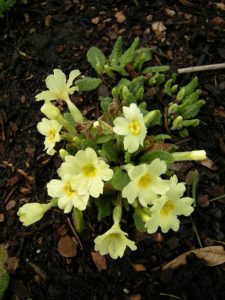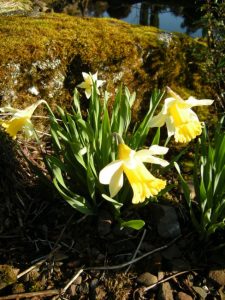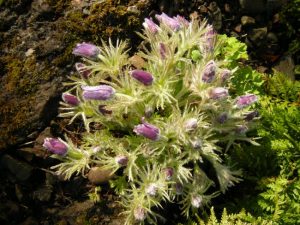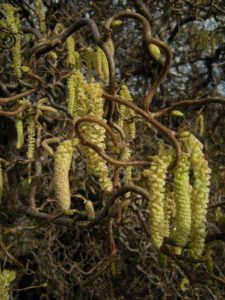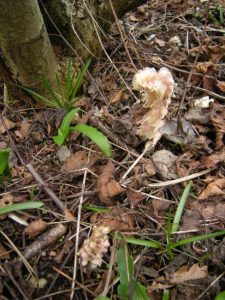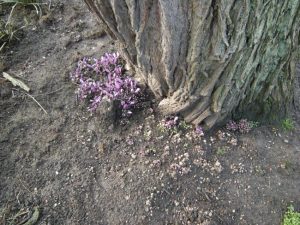Primula vulgaris and its close relative the Cowslip, P. veris, are well known spring indicators. Spreading by seed and the scratching activity of mammals which inadvertently split clumps apart, resulting in the propagules rooting into the surrounding vegetation. The Primrose has been developed by generations of plant breeders and is now marketed aggressively as spring bedding. Flower colour ranges through white to red and blue. Resist temptation and plant or sow the true yellow species; where a damp shady corner is available these plants will thrive. Look to see the difference in pin eye and thrum eyed flowers. Pin eye is self evident; observe the prominent pin headed stigma. In the thrum eyed flowers the multiple anthers protrude slightly from the petals.
Two others to keep an eye out for are Coltsfoot, Tussilago farfara, a British native with an invasive root system. The yellow composite flowers ride on a scaly stalk. When seen this is a reliable indicator that the soil is warm enough for weed seedlings to germinate. Should the weekend be dry go armed with a hoe and reduce the germinating population sprouting up through bare soil before they become a problem. One seedling that rapidly colonises bare soil is Lamium purpureum, the Red Dead Nettle. Flowering early in the year it is a provider of nectar for early bees who need sugar after their winter sleep.
This Easter has coincided with Daffodils in full bloom. Look out for Narcissus pseudonarcissus. Flowering in the Rock garden with yellow corolla surrounded by much lighter petals. A coloniser of damp ditch banks but as with the Primrose will appear in most areas in various forms.
At various locations through the garden are swathes of Wood Anemone, Anemone nemorosa, a coloniser of woodland glades. The brittle match thin roots form mats through the leaf litter. On a sunny day the myriad of buds suddenly open transforming large patches of ground into a white or pink carpet.
Also in the family Ranunculaceae is Pulsatilla vulgaris the Pasque Flower, found growing in the rock garden the purple buds protrude upwards from the central clump, opening bell shaped and drooping down into the dissected foliage. Covered in minute hairs this gives the foliage a silver appearance. Close by is Pulsatila vulgaris ssp. grandis slightly earlier to open and with larger flowers and the same bright yellow anthers, a native to Central Europe. Both prefer dry grassland, preferring a limestone base where they clump up successfully producing lacy seedheads during summer.
Harry Lauders Walking Stick was discovered in a Gloucestershire hedgerow two centuries ago, Corylus avellana ‘Contorta’ is hanging with yellow catkins filled with pollen. Look closer at the deciduous shoots to see the female flowers, small buds with slightly protruding red stigmas ready to catch the wind blown pollen grains.
Finally two parasitic species formerly in the family Orobanchaceae but with the family revisions following the adoption of the Angiosperm Phylogeny Group (APG) within the Herbarium is now in Scrophulariaceae. Lathraea clandestina is found near the pond at the base of host trees. A mass of purple parrot bill shaped flowers arise from the leafless clump. In contrast the flowers of L. squamaria, the Toothwort, are arranged on a short stalk, the whole is devoid of chlorophyll, insipid pink in colour and would pass as a shrimp if put on a dinner plate.

